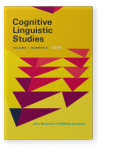Scandinavian pancake constructions as a family of constructions
Tor Arne Haugen | Ivar Aasen Institute for Language and Literature, Volda University College (Norway)
Hans-Olav Enger | Department of Linguistics and Scandinavian Studies, University of Oslo (Norway)
This paper deals with a classical problem in Scandinavian grammar, so-called ‘pancake sentences’, nicknamed after examples like Pannekaker er godt ‘Pancakes are good’ where there seemingly is disagreement between the plural subject and the predicative adjective in the neuter singular. Our aim is twofold. From the theoretical point of view, we shall argue that there are advantages with a construction-based approach, and that such an approach is superior to previous analyses within various generative frameworks.The main reason for this is that the data require generalizations over combinations of subjects and predicative adjectives at a rather specific level. From a more empirical point of view, we shall argue that Scandinavian displays a range of different, but related pancake constructions. For the first time, corpus data are brought into the debate. We show that a construction type that has not received much attention previously is in fact the most frequent type, namely constructions where the subject is a deverbal noun.
References
Boas, H., & Sag, I
(
2012)
Sign-based construction grammar. Stanford: CSLI.

Corbett, G.G
(
2006)
Agreement. Cambridge: Cambridge University Press.

Croft, W
(
2001)
Radical construction grammar. Oxford: Oxford University Press.


Dahl, Ö
(
2001)
Grammaticalization and the life cycles of constructions.
RASK –Internationalt tidsskrift for sprog og kommunikation, 141, 91–134.

Enger, H.-O
(
2004)
Scandinavian pancake sentences as semantic agreement.
Nordic Journal of Linguistics, 27(1), 5–34.


Enger, H.-O
(
2013)
Scandinavian pancake sentences revisited.
Nordic Journal of Linguistics, 36(3), 275–301.


Enger, H.-O. & Corbett, G.G
(
2012)
Definiteness, gender, and hybrids: Evidence from Norwegian dialects.
Journal of Germanic Linguistics, 24(4), 287–324.


Eriksson, O
(
2010)
Den såkallade med-frasen i kontrastiv belysning [The so-called with-phrase in contrastive light].
Språk och Stil, 201, 51–80.

Faarlund, J.T
(
1977)
Embedded clause reduction and Scandinavian gender agreement.
Journal of Linguistics, 13(2), 239–257.


Faarlund, J.T., Lie, S., & Vannebo, K.I
(
1997)
Norsk referansegrammatikk [
Norwegian reference grammar]. Oslo: Universitetsforlaget.

Gisborne, A., & Patten, N
(
2011)
Constructions and grammaticalization. In
B. Heine &
H. Narrog (Eds.),
The Oxford handbook of grammaticalization (pp. 92–104). Oxford: Oxford University Press.

Goldberg, A
(
1995)
Constructions. Chicago: Chicago University Press.

Goldberg, A
(
2006)
Constructions at work. Oxford: Oxford University Press.

Hansen, E., & Heltoft, L
(
2011)
Grammatik over det danske sprog I: Indledning og oversigt [
Grammar of the Danish language I: Introduction and overview]. København [Copenhagen]: Syddansk Universitetsforlag.

Haugen, T.A
(
2012)
Polyvalent adjectives in Norwegian. Ph. D. thesis. University of Oslo.
Hellan, L
(
1986)
The headedness of NPs in Norwegian. In
P. Muysken &
H. van Riemsdijk (Eds.),
Features and Projections (pp. 89–123). Dordrecht: Foris.


Josefsson, G
(
2009)
Peas and pancakes: On apparent disagreement and (null) light verbs in Swedish.
Nordic Journal of Linguistics, 32(1), 35–72.


Josefsson, G
(
2013)
Pancake sentences and the semanticization of formal gender in Mainland Scandinavian.
Language Sciences, 431, 62–76.


Källström, R
(
1993)
Kongruens i svenskan [
Agreement in Swedish]. Göteborg: Acta Universitatis Gothoburgensis.

Langacker, R.W
(
1987)
Foundations of cognitive grammar, vol I1. Stanford: Stanford University Press.

Langacker, R.W
(
1991)
Foundations of cognitive grammar, vol II1. Stanford: Stanford University Press.

Langacker, R.W
(
2008)
Cognitive grammar: A basic introduction. Oxford: Oxford University Press.


Maiden, M
(
2011)
Morphomes and ‘stress-conditioned allomorphy’ in Romansh. In
M. Maiden,
J.C. Smith,
M. Goldbach &
M.-O. Hinzelin (Eds.),
Morphological autonomy (pp. 36–51). Oxford: Oxford University Press.

Maiden, M
(
2013)
Semi-autonomous morphology? In
S. Cruschina,
M. Maiden &
J.C. Smith (Eds.),
The boundaries of pure morphology (pp. 24–45). Oxford: Oxford University Press.


Pustejovsky, J
(
1995)
The generative lexicon. Cambridge, Mass: MIT Press.

Søfteland, Å
(
2013)
Utbrytingskonstruksjonen i norsk spontantale [
The cleft construction in Norwegian spontaneous speech]. Ph. D. thesis. University of Oslo.
Teleman, U., Hellberg, S., & E. Andersson, E
(
1999)
Svenska Akademiens Grammatik 3: Fraser [
The Swedish Academy grammar 3: Phrases]. Stockholm: Norstedts.

Wechsler, S
(
2013)
The structure of Swedish pancakes. In
P. Hofmeister &
E. Norcliffe (Eds.),
The core and the periphery: Data-driven perspectives on syntax inspired by Ivan A. Sag. Stanford: CSLI Publications.

Cited by
Cited by 2 other publications
CORBETT, GREVILLE G. & SEBASTIAN FEDDEN
2016.
Canonical gender.
Journal of Linguistics 52:3
► pp. 495 ff.

Haugen, Tor Arne & Hans-Olav Enger
2019.
The semantics of Scandinavian pancake constructions.
Linguistics 57:3
► pp. 531 ff.

This list is based on CrossRef data as of 1 july 2024. Please note that it may not be complete. Sources presented here have been supplied by the respective publishers.
Any errors therein should be reported to them.
